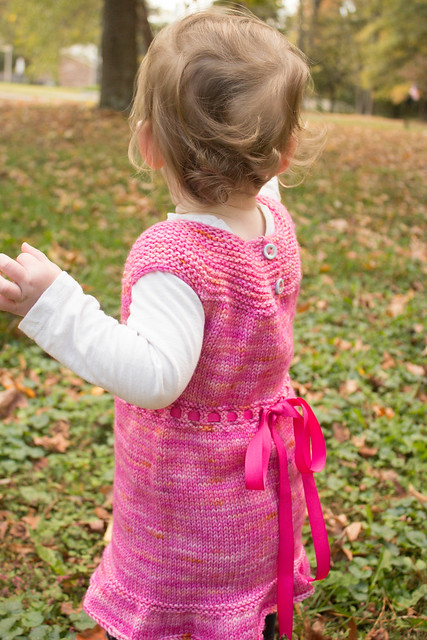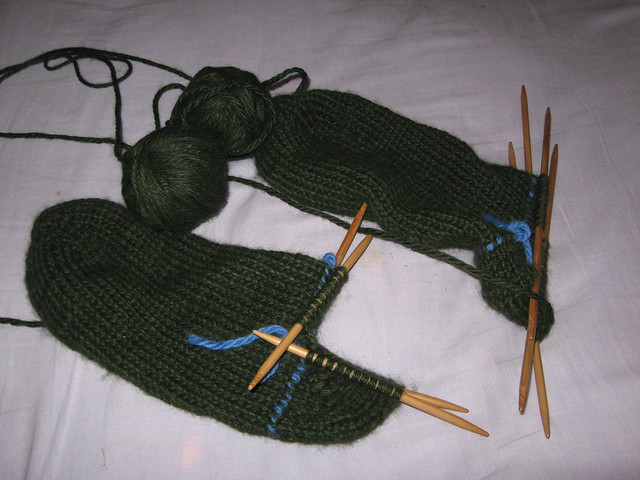Have you joined the KAL yet? This month I’m running a KAL for Rosemary & Bay, one of my favorite self-published patterns. I’ve extended the deadline to use a coupon to get Rosemary & Bay: enter “littleturtle” before the 12th, and get 40% off!
Let me tell you why I love this pattern. Last week I cast on for the neckline, and it was just sailing by. I loved watching the changes in colors, I loved seeing how the garter stitch was working up, and I was anticipating the divide for the armholes. I love that this pattern has no seaming, so the work just sails by. Which means, if you can’t tell by the picture, I’m in a bit of a pickle… I just kept going.
I have to admit I’ve went a bit beyond the neckline, which was my goal for this week. If you’re just joining us, let’s set a goal of picking out yarn and getting the neckline done this week. Don’t be afraid to stash dive… how neat would this baby look in rainbow colors? Or even more than the two I’m using here?
Later this week I’ll have a tutorial about joining the neck, since if you haven’t done this particular pattern before, that can bit a bit tricky.
But let me tell you a bit more about this knit. It’s sized for newborn to two years old (and frankly, if you want to push it to 3 years, grab an Aran weight yarn and go up a needle size or two). Rosemary & Bay is well suited to a single color of yarn, but also looks so darn cute in multiple colors. (I’m planning to add shamrocks to mine – just you wait and see). It’s great in wool or cotton, and the garter stitch keeps most of the pattern from having too much purling.
Don’t believe me? Vmay71, on Ravelry, says this about the pattern: “She got me started on Tuesday and done by Saturday. A clear pattern that knits up quickly. What more could you ask for? ”
So come join me! We’re going to have a bunch of fun!
And pickup the pattern here to get 40% off! You don’t even need a Ravelry account!






 I suppose it was coming. I
I suppose it was coming. I 













